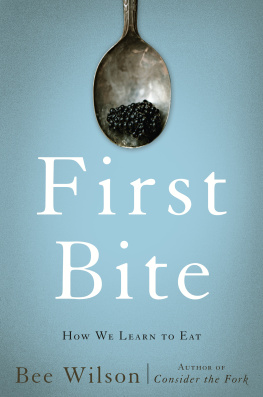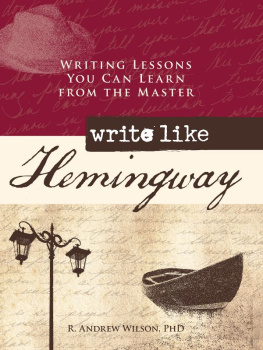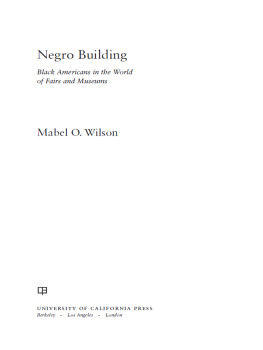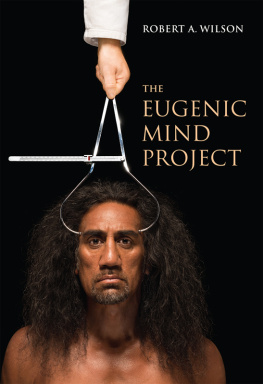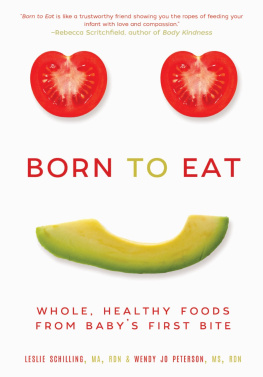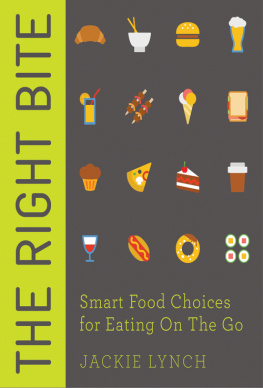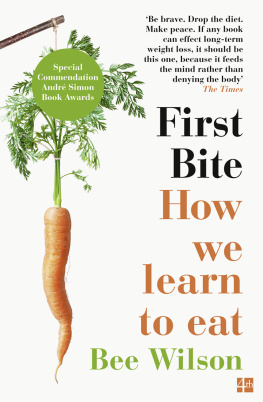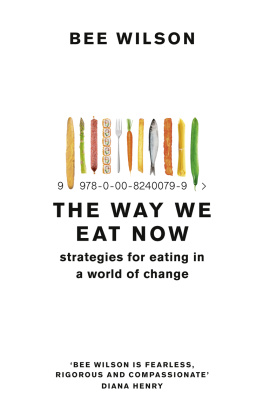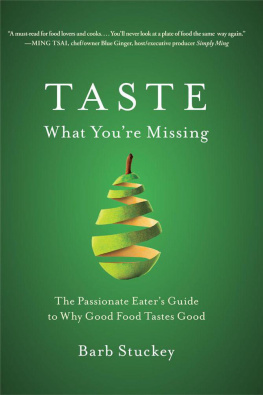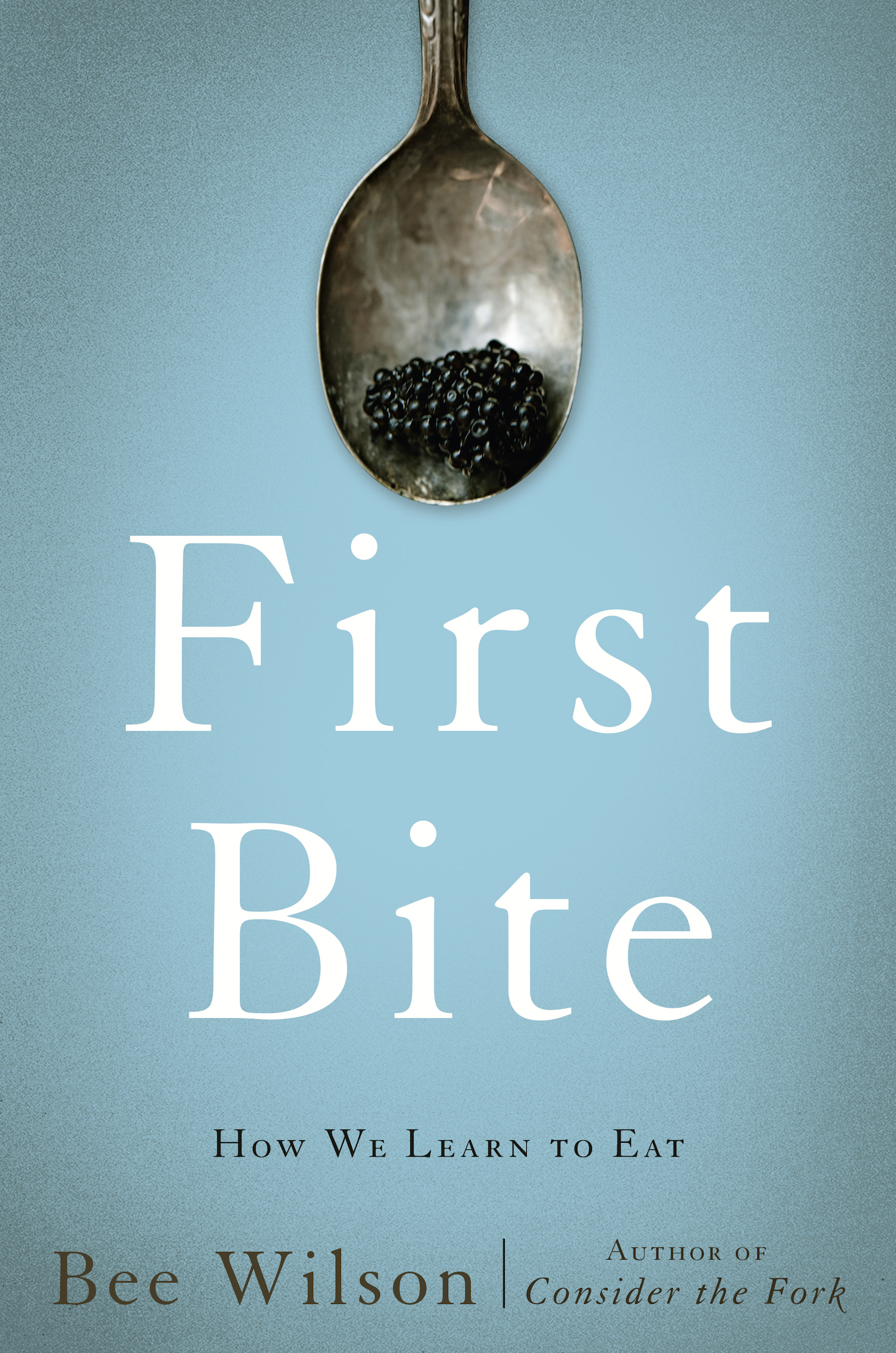First
Bite
Also by Bee Wilson
Consider the Fork
Sandwich
Swindled
The Hive
First
Bite
How We Learn to Eat
Bee Wilson
with illustrations by Annabel Lee
A Member of the Perseus Books Group
New York
Copyright 2015 by Bee Wilson
Published by Basic Books,
A Member of the Perseus Books Group
All rights reserved. Printed in the United States of America. No part of this book may be reproduced in any manner whatsoever without written permission except in the case of brief quotations embodied in critical articles and reviews. For information, address Basic Books, 250 W. 57th St, 15th Floor, New York, NY 10107.
Books published by Basic Books are available at special discounts for bulk purchases in the United States by corporations, institutions, and other organizations. For more information, please contact the Special Markets Department at the Perseus Books Group, 2300 Chestnut Street, Suite 200, Philadelphia, PA 19103, or call (800) 810-4145, ext. 5000, or e-mail special.markets@perseusbooks.com.
Designed by Linda Mark
Excerpt on page 37 from the poem An Evening in Terezin from I Never Saw Another Butterfly: Childrens Drawings and Poems from Terezin Concentration Camp, 194244 by Hana Volavkova, copyright 1978, 1993 by Artia, Prague. Compilation 1993 by Schocken Books. Used by permission of Schocken Books, an imprint of the Knopf Doubleday Publishing Group, a division of Penguin Random House LLC. All rights reserved.
Library of Congress Cataloging-in-Publication Data
Wilson, Bee, author.
First bite : how we learn to eat / Bee Wilson ; with illustrations by Annabel Lee.
pages cm
Includes bibliographical references and index.
ISBN 978-0-465-07390-0 (e-book) 1. Gastronomy. 2. Food preferences. I. Lee, Annabel, 1966 illustrator. II. Title.
TX631.W548 2015
641.013dc23
2015027683
For Emily
Contents
S ome find the whole matter of eating easy, while others find it hard. I used to be on the wrong side of this great divide and somehow, to my own surprise and relief, leaped over to the other side. This book is my attempt to explore how this switch was possible.
You dont have to look far in our world to encounter peopleof all sizeswho relate to food in chaotic ways. The chaos can take many forms: compulsive overeating, undereating, or extreme pickiness. Some people become so obsessed with the purity of what enters their mouths that they cannot accept invitations to eat with friends. It is a lonely occupation, being someone who wrestles to control their responses to food, given that modern life is steeped with things to eat, both real and imaginary. Snacks assail us at the checkout; dream feasts tease us from billboards, newspapers, and TV cooking shows.
Without ever quite having a full-blown eating disorderthough I came closeI managed to make myself pretty miserable about eating for the best part of a decade, from the middle school years to young adulthood. I probably appeared fine: a bit overweight, nothing more. But food was my main relationship, and although it had some of the thrills of romanceespecially when I was in the kitchen with a hunk of sweet brioche doughit wasnt a stable or sustaining kind of love. We talk in a sickly way of indulgent foods, but when you are trapped in compulsive habits of dependency on them, it does not feel like being pampered. There were days when I gave myself up to consuming guilty treats. Other days were for not-eating, which was even worse, as I taunted myself with the foods that I wouldnt permit myself.
Thankfully, that phase of life now seems distant. Eating wellby which I dont mean clean eating or raw juice fasts but regular meals of real, flavorsome foodjust isnt that complicated for me anymore. Now that I am through on the other side, I can see that over a period of months, if not years, I learned to master a series of skills that Id once deemed insurmountable. I learned that it was okay to eat a hearty meal when I was hungry, but also okay to stop when I was full. My cravings for pastries lessened and my cravings for vegetables increased. There are still plenty of things I worry and obsess aboutbelieve mebut my own eating is seldom one of them. Dinner is just dinner: nothing more nor less than the high point of the day.
In our house, as in many others, the battleground over food has shifted to the children. As a parent trying to getting my three children to eat healthilybut not obsessively soI have sometimes felt as lost as I once did about my own eating. After the milk stage (and that was hard enough), none of the skills of feeding came naturally. How do you promote vegetables to an ironic teenager in a way that isnt counterproductive? What do you do when your daughter comes home and says her friends have started skipping lunch? How do you keep a sense of proportion about fat and sugar without giving in completely to the ultra-processed food that is now ubiquitous?
In those busy moments after school and before bed, I cook a quick meal that I hope will please everyone. I may find that one child grumbles about the grilled eggplant, while another says it is the best bit, and the third sits quietly weeping because, while he actually likes eggplant, the pieces on his plate are touching his chicken and are therefore inedible. Did I say the high point of the day? And yet, comparatively speaking, my children are not problem eaters.
All parents have moments of thinking that it just isnt possible to teach a child to eat well, or at least not your child. Many grown-ups are more pessimistic still about their own ability to change how they behave around food. But writing this book has taught me that there is immense potential for improving our eating habits. It may take longer for some people to get there than others, but learning how to eat betterwhich is quite different from going on a dietis within anyones grasp. Perhaps the most eloquent argument for learning new ways to eat is that of pleasure. Eating isor should bea daily source of delight rather than something to fight against. Its good here, on the other side of the divide. I do hope youll join me.
One of the reasons I like bread and jam, said Frances,
is that it does not slide off your spoon in a funny way.
Russell Hoban, Bread and Jam for Frances
S o many of our anxieties around diet take the form of a search for the perfect food, the one that will cure all our ills. Eat this! Dont eat that! We obsess about the properties of various ingredients: the protein, the omega oils, the vitamins. But this is getting ahead of ourselves. Nutrients only count when a person picks up food and eats it. How we eathow we approach foodis what really matters. If we are going to change our diets, we first have to relearn the art of eating, which is a question of psychology as much as nutrition. We have to find a way to want to eat whats good for us.
Our tastes follow us around like a comforting shadow. They seem to tell us who we are. Maybe this is why we act as if our core attitudes to eating are set in stone. We make frequent attemptsmore or less half-heartedto change what we eat, but almost no effort to change how we feel about food: how well we deal with hunger, how strongly attached we are to sugar, our emotions on being served a small portion. We try to eat more vegetables, but we do not try to make ourselves enjoy vegetables more, maybe because theres a near-universal conviction that it is not possible to learn new tastes and shed old ones. Yet nothing could be further from the truth.

